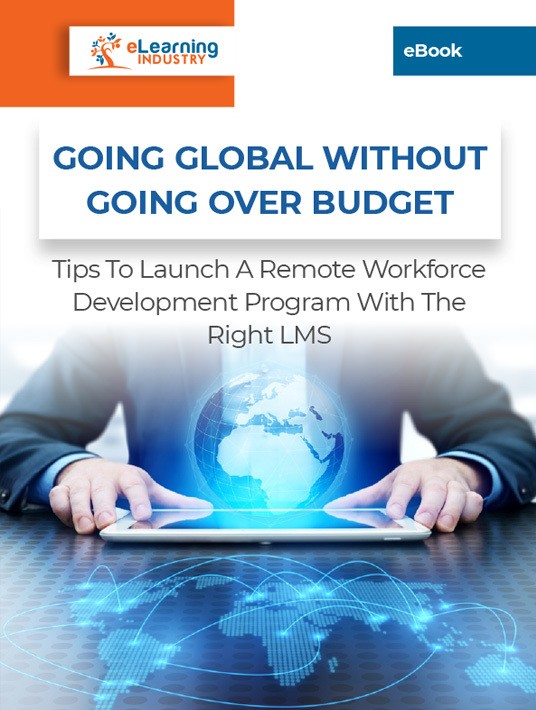Creating A Workforce Development Strategy: What To Avoid
Some disciplinarians use the shaming technique to teach a lesson—embarrassing them into compliance. But it often causes lifelong trauma. You may not see the negative repercussions right away. But it’ll affect their personalities, shape their character, and be inadvertently taken out on everyone they meet. So, when your workers don’t do things the right way, it’s often more productive to train them instead of finding a replacement. What common mistakes should you avoid in this process? And how can you create a workforce development strategy that helps under-performers meet company standards?

1. Making Things Too Competitive
To effectively use one-up-man-ship in the office, it has to be cordial and playful. When it gets cut-throat it quickly devolves into corporate sabotage. And while that may help one or two people get ahead, it hurts the company’s overall image, morale, and bottom line. Gamification techniques, like badges and leaderboards, are a healthy way to raise a competitive spirit. However, it should still contain some element of fairness, especially to underperformers. For example, say you issue rewards to the top salespeople. Or badges to whoever completes an online training course fastest. That can leave slower performers feeling constantly dejected.
Adjust the leaderboard window. Make a daily tally and reset at midnight, so everyone has a better shot. Or stretch the duration from a week to a year, allowing underperformers room to catch up. You can also diversify your badges—some for speed, some for leads, some for customer satisfaction, etc. This way, all your employees can find an area they excel in, and get a badge for it.
2. Leaving Out Simulations
You might feel your non-performers won’t benefit from simulation. After all, they’ve already proven they’re below par—2 things disprove this theory. One, practice makes perfect, so the more simulations they engage in, the better they’ll get. Just set it up in a way they can replay at will without feeling guilty or judged. As for factor 2, simulations don’t just teach you how to do something. They guide you on what not to do, training you from your mistakes. This matters because as employees go through the simulation, instructors can watch where they go wrong.
This is a helpful form of course-correction because many underperformers aren’t even aware which part of their task they’re messing up. For example, a salesperson may have low sales volumes because customers react to the salesperson’s tone. Maybe they can generate leads but aren’t as good at following up. Simulations show you which specific areas your employee training participant needs to polish so you can craft content accordingly.
3. Neglecting Employee Privacy
I’ve already mentioned adults hate embarrassment and the non-performer is probably already stressed about their performance shortcomings. In rare cases, your underperformer simply can’t be bothered to put in the effort. But sometimes, they have a genuine deficiency, and they’d love to fix it if they just knew how. So, don’t put someone like that in a group setting. They’ll only feel more self-conscious. Instead, set up a private peer-based coaching system. They can train and respond to one-on-one. Reassure them their sessions will remain confidential. And remind them you’re still invested in their employment. They’re probably anxious about getting fired, so your online training may involve a lot of empathy and affirmation. You’re not giving up on them, so don’t let them give up on themselves.
4. Personalizing In A Negative Way
There are lots of stereotypes surrounding communication. Sometimes, these assumptions can cause misunderstandings. You’ll hear things like, 'It’s not what you said. It’s how you said.' Or 'Don’t look at me like that!' This kind of misconception can slip into underperformance online training. Psychologists advise us to say, 'When you do X, I feel Y,' … as opposed to, 'You made me feel Y.' Similarly, we’re prompted to separate actions from labels. In the sense of, 'She did a bad thing,' instead of 'She’s bad.' These semantics do make a difference, especially for non-performers. If you make them feel incompetent or worthless, they’ll give up and quit.
So, if you want them to stay—and you do, otherwise you wouldn’t be training them—distance them from their underperformance. Focus on fixing the problem, not the person. For instance, invite them to participate in simulations or scenarios that provide personal, and private, eLearning feedback. Instead of calling them out during a live event.
5. Focusing On The Weaknesses And Forgetting About The Strengths
Everyone is good at something. Even underperformers possess strengths that they can use to benefit your organization. The key is finding them so that they are motivated to improve and fine-tune their talents. As well as bridge the gaps. They’re more likely to participate if they’re aware of their redeeming qualities. Instead of being constantly reminded of their performance issues. Pre-assessments can help you reveal undisclosed abilities that they’re able to hone through a personalized workforce development strategy. For example, they’re particularly good at active listening skills. Which might make them a great fit for your customer service team. At the very least, they can become a mentor for others who lack this vital skill. You can customize their path within the workforce development LMS to build the strengths and motivate them to address the pain points.
From childhood and well into adulthood, we’re often advised not to criticize someone in public. It hurts their feelings and makes them feel alienated. Thus, if you have underperformers you’d like to retain, do it carefully. Use the 'easy-setting' in their gamification metrics. Incorporate simulations generously and invite them to team up with a more experienced co-worker/mentor. Don’t make it a personal attack. Be subtle, and focus on the task, not the person.
Do you want to discover more about the benefits a new LMS can bring to your business? Download the eBook Going Global Without Going Over Budget: Tips To Launch A Remote Workforce Development Program With The Right LMS, explore ways to bridge the gaps and enhance your business strategy.









